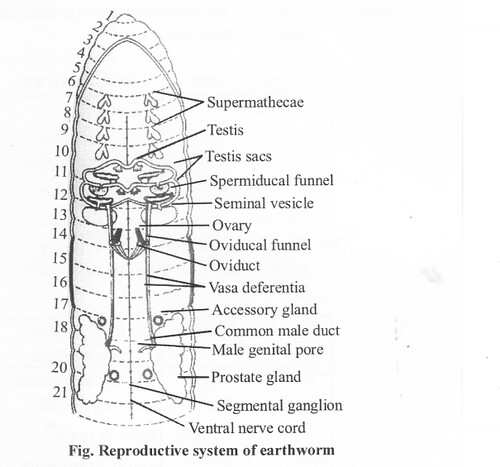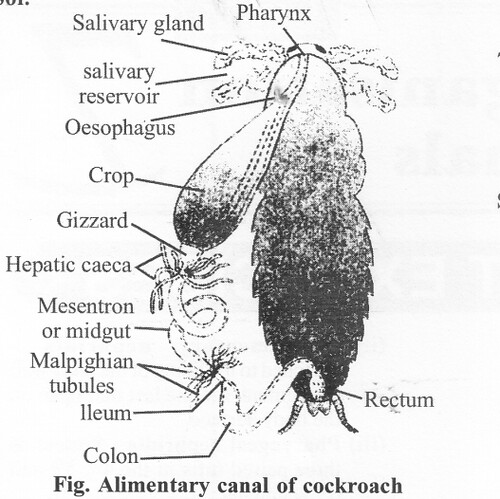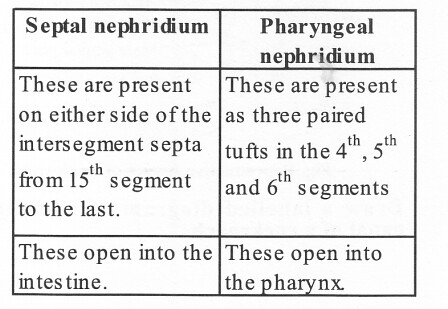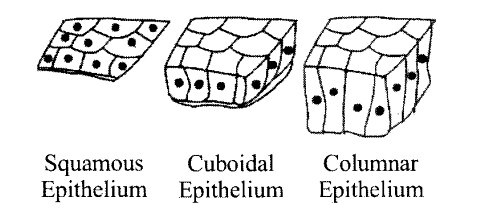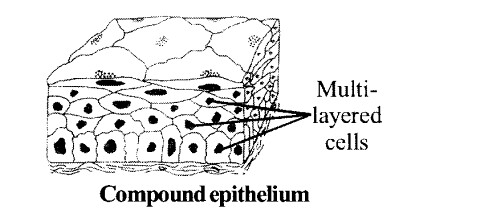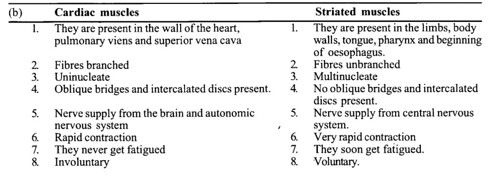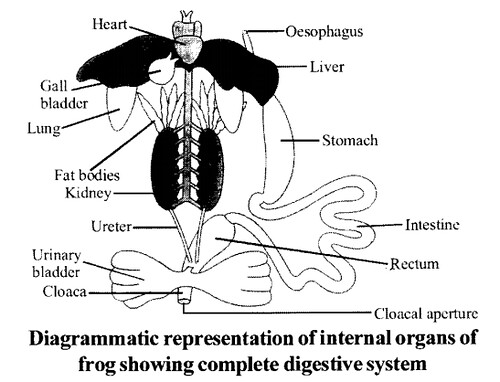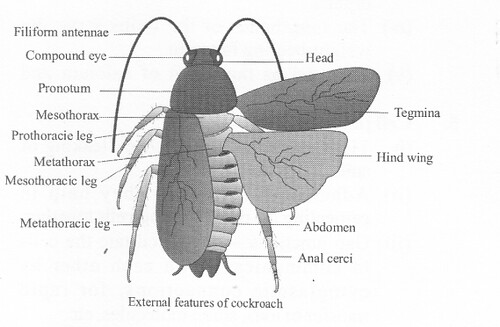NCERT Exemplar Solutions for Class 11 Biology Chapter 7 Structural Organization in Animals
These Solutions are part of NCERT Exemplar Solutions for Class 11 Biology. Here we have given NCERT Exemplar Solutions for Class 11 Biology Chapter 7 Structural Organization in Animals.
VERY SHORT ANSWER QUESTIONS
Question 1.
State the number of segments in earthworm which are covered by a prominent dark band or clitellum.
Solution:
Segments 14-16 bare covered by a prominent dark band of glandular tissue called clitellum in a mature earthworm. It secretes mucus and albumen that help in formation of cocoon.
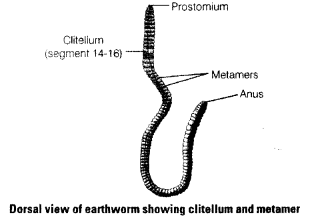
Question 2.
Where are sclerites present in cockroach?
Solution:
In all the body segments of cockroach sclerites are present. They are of two types dorsal sclerites often known as tergites, and ventral sclerites which are referred to as sternites.
Question 3.
How many times do nymphs moult to reach the adult form of cockroach?
Solution:
The nymph grows by moulting about 13 times to reach. In cockroach’, the development is indirect and paurometabous adult form has three stages, i.e., egg, nymph and adult. The nymph resembles adult except/or undeveloped wings and genitalia.
Question 4.
Identify the sex of a frog in which sound producing vocal sacs are present.
Solution:
Sex of frogs can be distinguished on the basis of presence of sound producing vocal sacs. These organs are present in males which make them crock lauder than females, so as to attract females for mating.
Question 5.
A muscle fibre tapers at both ends and does not show striations. Name the muscle fibre.
Solution:
Muscle fibres that taper at both the ends (fusiform) and do not show striations are smooth muscle fibres. They are also called involuntary muscles.
Question 6.
Name the different cell junctions found in tissues.
Solution:
The different cell junctions found in tissue include:
(i) Tight junctions are regions where plasma membrane of adjacent epithelial cells are held close together. They check the movement of material between then.
(ii) Gap junctions are meant for chemical exchange between adjacent cells.
(iii) Adhering junctions function to keep neighbouring cells together.
Question 7.
Give two identifying features of an adult male frog.
Solution:
The two identifying features of an adult male frog include
(a) Nuptial Pad is a copulatory pad present on the first digit of the forelimb of male frog and helps in closing female during amphelexus.
(b) Vocal Sacs are loose skin folds on throat of male frogs for producing louder croak to attract females for mating purposes.
Question 8.
Which mouth part of cockroach is comparable to our tongue?
Solution:
In cockroach, hypopharynx acts as a tongue and lies within cavity enclosed by the mouth parts.
Question 9.
The digestive system of frog is made of the following parts. Arrange them in an order beginning from mouth. Mouth, oesophagus, buccal cavity, stomach, intestine, cloaca, rectum, cloacal aperture.
Solution:
The correct arrangement of the part of digestive system in frog is
Mouth —> Buccal cavity —> Oesophagus —> Stomach —>Intestine —> Rectum —> Cloaca —> Cloacal aperture.
Question 10.
What is the difference between cutaneous and pulmonary respiration?
Solution:
In frog respiration takes place via the skin as well lungs.
Pulmonary respiration and occurs outside the water through lungs. Cutaneous respiration takes place in water as well as land, occurs through highly vascularised moist skin.
Question 11.
Special venous connection between liver and intestine and between kidney and intestine is found in frog, what are the called?
Solution:
In frog, venous connection between liver and intestine is called hepatic portal system and venus connection between the kidney and the lower parts of the frog is called renal portal system.
SHORT ANSWER QUESTIONS
Question 1.
Stratified epithelial cells have limited role in secretion. Justify their role in our skin.
The edible part of the peach or pear pome fruit for the fleshy thalamus.
Solution:
- Stratified epithelium consists of epithelial cells in which the innermost layer is made up of columnar or cuboidal cells.
- It is a type of compound epithelium and a waterproof protein called keratin is present few outer layers.
- These layers of dead cells is called homy layer which is shed at intervals due to frictions and thus has a limited role in secretions and absorption.
- The main function of stratified epithelium is to provide protection to the body against mechanical and chemical stresses.
Question 2.
How does a gap junctions facilitate intercellular communication ?
Solution:
Intercellular communication is facilitated by gap Junction allowing small signaling molecules to pass from cell to cell.
These are fine hydrophilic channels, between two adjacent animal cells that are formed with the help of two protein cylinders called connexus.
Each connexus consists of six proteins subunits that surround a hydrophilic channel. Opening or closing of channel is controlled by pH and Ca2+ ion concentration.
Question 3.
Why are blood, bone and cartilage called connective tissue?
Solution:
- Connective tissue pt’ovides the structural framework and support to different organs forming tissue.
- Blood is a fluid or vascular connective tissue, which connects various organs and transports substances from one place to another.
- Bone is a solid, rigid and strong skeletal connective tissue, which supports the body and helps in locomotion.
- Cartilage is also a skeletal connective tissue, not as rigid bone but piable and resists compression.
- It plays role in support and protection and present in tip of nose, outer ear joints etc.
Question 4.
How do you distinguish between dorsal and ventral surface of the body of earthworm?
Solution:
The body of an earthworm can be distinguished into dorsal and ventral sides due to the presence of certain peculiar feature in it which include the following.
(i) The dorsal surface is darker than ventral surface because it is marked by a dark median mid dorsal line along the longitudinal axis of body. This is due to dorsal blood vessel, seen through integument.
(ii) Genital openings (pores), are present in the ventral surface of both male and female.
(iii) On vental surface genital papilla is located and helps in copulation.
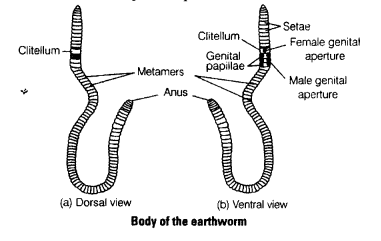
Question 5.
Complete the following statement.
(a) In cockroach grinding of food particle is performed by ……..
(b) malpighian tubules help in removal of …….
(c) Hind gut of cockroach is differentiated into……
(d) In cockroach blood vessels open into spaces called ……
Solution:
(a) Gizzard is a muscular and greatly folded structure which marks the end of foregut in cockroach and bears six plates with teeth for crushing and grinding the food.
(b) Malpighian tubules are excretory in ‘ function as they help in the removal of
nitrogenous wastes in arthropods.
(c) Ileum, colon and rectum and rectum opens and through anus.
(d) Haemocoel is the body cavity of cockroach divided into sinuses and contains visceral organs of cockroach floating in haemolymph.
Question 6.
Mention special features of eye in cockroach. Discuss compound eye in arthropods and mention its structural features.
Solution:
- In cockroach the eyes are large sessile, paired bean-shaped and present on either side of head.
- The are compound in nature. Each compound eye consists of a large number of visual elements called ommatidia.
- Each ommatidium is composed of a diopteric region and reticular (receptor) region. It is capable of producing a separate image of a small part of object seen.
- Thus, the image of the object viewed consists of several pieces and is known as mosaic image.
- Fine nerve fibres arise from the inner end of each ommatidium all of which combine to form one optic nerve connected to the brain.
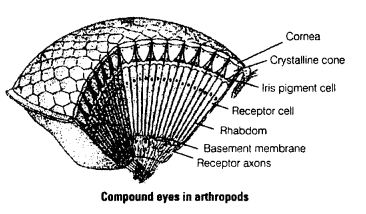
Question 7.
Frog is a poikilotherm, exhibits camouflage and undergoes aestivation and hibernation, how are all these benficial to it?
Solution:
- A trait with a current functional role in the life history of an organism that is maintained and evolved by means of natural selection and evolution and help organism in its survival is an adapture triat.
- Frog is a poikilotherm or a (cold blooded animal). It regulates its body temperature according to its environment.
- It undergoes winter sleep (hibernation) for withstanding very cold temperatures and sujnmer sleep in hot temperatures (aestivation).
- During this period, it lives in a dormant stage with very minimal vital body activities.
- Frog is capable of changing its body colour as well, though gradually, with the change in its surrounding and climatic conditions.
- This capability in frog is called as camouflage which lets it escape from the predators, an essential survival parameter for living.
Question 8.
Write the functions in brief in Column II, appropriate to the structures given in column I.

Solution:
(a) Nictitating Membrane in frog protects the eye from water and any damage by covering the eye ball of frog.
(b) Tympanum is present on each side of the frog head and is involved in the hearing process.
(c) Copulatory Pad present in the limbs of the male frog and helps in copulation by holding the female during its sexual activity.
Question 9.
Using appropriate examples, differentiate between false and true body segmentation.
Solution:
- The serial repetition of similar body parts along the length of an animal is segmentation. The body of animals can be truely segmented or pseudo/false segmented.
- True segmentation is found in annelids, arthropods and some chordates. In these organisms there is a linear repetition of body parts and each repeated unit is called somite (metamere).
- In earthworms, the successive somites are externally and intemaly. ‘
- Pseudosegmentation is seen when body is divided into number of false segments which are independent of each other.
- Each segment is able to perform all the vital function of body. Growth occurs by the addition of new segments from the anterior end, e.g., tapeworm.
Question 10.
What is special about tissue present in the heart?
Solution:
Special tissue present in heart is called cardiac muscle, which has the following features
(i) Cardiac muscle fibres are supplied with both central and autonomic nervous system and are not under the control of will of animal.
(ii) These muscles show rhythmicity and are immune to fatigue.
(iii) They have a rich supply of blood.
(iv) They are myogenicas. They possess the property of contraction even if completely isolated from the body.
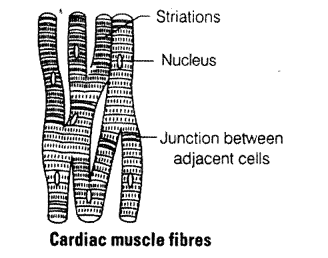
LONG ANSWER QUESTIONS
Question 1.
Comment upon the gametic exchange in earthworm during mating. Discuss the physiology in reproduction of earthworm.
Solution:
In earthworm mating is a unique process. Earthworm is a hermaphrodite. In which breeding takes place during rainy season and copulation begins soon after maturation of the sperms.
The gametic exchange and the physiology of reproduction during mating can described in the following manner.
(i) Earthworms are protandrous animal (i.e., maturation of sperm takes place much earlier then that of ova).
(ii) Mating process in earthworm occurs through process of cross-fertilisation.
(iii) The mating process involves exchange of gametic materials between the two worms.
(iv) Two individuals from adjacent burrows emerge half but and lie in contact with each other, and exchange packets of sperms called spermatophores opposite gonadal opening.

(v) The skin encircling male pore, elevates a little during the process to form a temporary papilla that fits like a penis into the opposite spermathecal pore to keep it open.
(vi) The copulating worm after filling of spermatheca moves a bit to adjust another pair of spermathecae to face the other male pores. This is accomplished in about an hour’s copulation.
(vii) The sperms mostly remain in their diverticula within the spermathecae and the ampulla is associated with the secretion of nutritive substances for the sperms.
(viii) The sperm and egg are passed into cocoon, secreted by clitellar gland.
(ix) Fertilisation is therefore external.
Question 2.
Explain the digestive system of cockroach with the help of labelled sketch.
Solution:
The alimentary canal of cockroach is divided
into three regions foregut, midgut and hindgut.
(i) Mouthy cavity, pharynx, oesophagus, crop and gizzard are included in foregut.
(ii) Mouth cavity is a small space, surrounded by mouth parts. Food is crushed and acted upon by the salivary secretion in mouth.
(iii) The mouth opens into a short tubular pharynx, leading towards the narrow tubular passage called oesophagus and then into a sac-like structure called crop which acts as a storage organ.
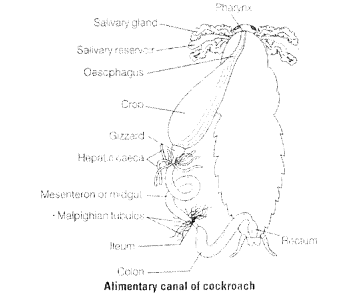
(iv) The crop is followed further by gizzard ‘ (proventriculus). Gizzard is composed of thick circular muscles and thick inner cuticle forming six highly chitinous plates called as teeth. It associated with the grinding and crushing of food particles. A thick cuticle lines the entire foregut.
(v) About one-third middle part of alimentry canal comprises of midgut or mesentron. The internal lining of midgut is an endodermal epithelium of columnal cells raised into several small villi like folds.
(vi) Anterior most part of midgut surrounding the stomadaeal valve is called cardia. Finger like blind processes called as enteric or hepatic caeca are present at the junction of foregut and midgut.
(vii) A ring of yellow filamentous structures is formed between the midgut and hindgut that aid in the removal of excretory products from haemolymph.
(viii) The remaining one-third posterior part of alimentary canal is Hindgut. It is relatively thicker than the midgut lined by cuticle and ectodermal epithelium.
(ix) Hindgut is diffrentiated into three parts anterior Ileum, middle colon and posterior rectum. Ileum is short and relatively narrower and its cuticie bears minute spines. Colon is the longest, relatively thicker and a coiled part of hindgut. Rectum is a small and oval chamber that opens out through anus.
We hope the NCERT Exemplar Solutions for Class 11 Biology at Work Chapter 7 Structural Organization in Animals, help you. If you have any query regarding NCERT Exemplar Solutions for Class 11 Biology at Work Chapter 7 Structural Organization in Animals, drop a comment below and we will get back to you at the earliest.
